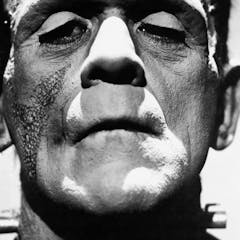
Articles on Frankenstein
Displaying 1 - 20 of 22 articles

She has largely been airbrushed from history, but a new novel seeks to make Claire Clairmont visible by imagining her life after Byron.

Monsters reveal how societies define and punish deviance. Wintering’s widows make me think about the women I know who are strong and wise in ways neither recognised nor endorsed by the mainstream.

A recent addition to the “spooky” calendar of events are Gothic festivals, inspired by Gothic literature classics such as “Dracula”.

Set in the not-so-distant future, Foe poses questions about humanity and what it means to be human in the face of environmental collapse.

The possibilities of ‘more human than human’ artificial intelligence and the dangers of playing God and are not new – they’re the subjects of one of the world’s first science-fiction novels.

New research shows that literary relatives tend to share a similar writing style.

Leaving our earthly bodies and living forever as a machine isn’t just a thing of modern science fiction. These transhumanist ideas date back to the 18th century.

In the project Erasing Frankenstein, students, educators and incarcerated women collaborated to created an erasure poem of Mary Shelley’s classic text, and publicly showcase their work.

The story of how Mary Shelley dreamed up Frankenstein is famous. Less well-known, however, is the reading material that inspired her to write.

Frankenstein might look like fantasy to modern eyes, but to its author and original readers there was nothing fantastic about it.

Proper horror should be more than just monsters and suspense.

The author Mary Shelley wrote Frankenstein when she was 18. A new film investigates the gender politics of the novel’s creation.

By showing us a world from which mothers are largely absent, Mary Shelley reminds us that the genius of motherhood lies less in biological reproduction than in the capacity to love.

Written by a teenager, Frankenstein is an extraordinary novel that still endures 200 years after its first publication.

If Mary Shelley wrote the book today, Victor would surely be a synthetic biologist. But those fiddling with living things in 2018 have hopefully learned from her cautionary tale.

Netflix hit, Black Mirror, follows in the footsteps of other forward-thinking sci-fi storytellers.

On its 200th anniversary, why is it a surprise that Mary Shelley wrote Frankenstein at such a young age – just because she’s a woman?

Mary Shelley’s novel asked questions about the human condition that are more relevant today than ever.

Much like the fictitious Victor Frankenstein in Mary Shelley’s novel, more and more scientists are running away from their real-life creations.

All the popular monsters you’ll see out trick-or-treating, from Frankenstein to Dracula, were born out of fear and anxiety about change and technology.
